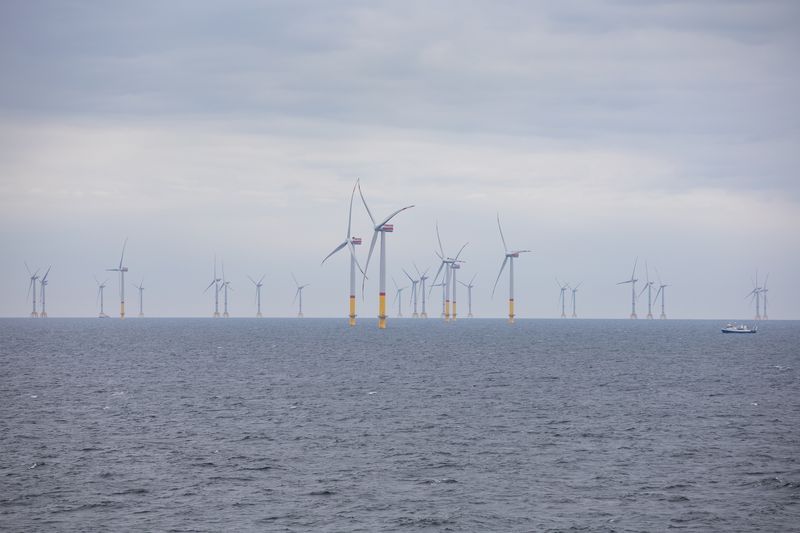Equity divergence
The offshore wind sector has received a tonic with two mega greenfield deals financed this month following the big Polish deal in June and a further one due soon in the same country. That amounts to €14bn of project finance. Clearly there is no shortage of debt. Equity is another matter.

There is no shortage of banks lining up to finance offshore wind. Every deal over the past year has involved a huge list of banks – between 20 and 30 – with the deals from countries ranging from the US to UK, Poland and on to Taiwan. The upper limit of debt per project is said to be €4.5bn if an export credit agency is involved. That is chunky.
Banks cannot get enough of offshore wind. In an era where building a green book is important for publicity purposes and is rewarded via lower risk-weightings for long-tenored debt, offshore wind deals allow banks to take large tickets. Compare the workload involved in a smaller battery or onshore wind deal where there are fewer banks to share the workload and the allocations are much smaller.
Even when the offshore financings are oversubscribed and allocations are scaled back, the green book can get a significant boost from a big offshore ticket. Significant construction problems are emerging on some offshore deals – such as Neart na Gaoithe in the UK, Yunlin in Taiwan and now Courseulles-sur-Mer in France – but bank appetite has not been sated. New project debt has recently been added on to the Courseulles-sur-Mer scheme.
The same level of enthusiasm cannot be said for equity. There is an important disconnect between the two disciplines, which is unprecedented. The construction issues mentioned are a factor for the equity sector but there is a more general problem.
In May Orsted cancelled its 2.4GW Hornsea 4 offshore wind project in the UK taking a £330m–£385m Ebitda hit on the scheme with break costs on the contract at £385m–£495m. It said there were "several adverse developments relating to continued increase of supply chain costs, higher interest rates, and an increase in the risk to construct and operate Hornsea 4". But could difficulty securing a farmdown of equity for such a large project have been the pressing factor? After all, this is quite a knock to take on a scheme that won a contract for difference only last September.
The company is currently seeking to sell down 50% of the 2.9GW Hornsea 3 scheme, which is currently under construction. Two leading bidders are said to have dropped out. It has just raised a large US$3bn project financing on the Changhua 2 scheme in Taiwan. Details have yet to emerge on the farmdown but it is assumed local investors will be involved.
Big equity needs to deploy significant sums raised via the big funds. But as Hornsea 3 shows, investors are becoming more choosy. It was interesting that one other big greenfield deal closed this month, East Anglia 3. Masdar took a 50% stake, not 49%. Masdar is now a developer in its own right but Iberdrola will now have to share the governance on the project, a new experience for the Spanish company.
There is a growing list of offshore project auctions that are being delayed. And as we have seen this cannot be due to a lack of debt.
Belgium's Council of Ministers has postponed the 700MW Princess Elisabeth Zone 1 offshore wind tender. The Dutch government has postponed tenders for two offshore wind farms with a total capacity of 2GW due to low interest. Denmark is to relaunch a 3GW offshore wind tender in the autumn across three sites after having received no bids late last year. The tender has been redesigned to include a contract for difference structure, not a zero subsidy contract.
In Germany last month only the TotalEnergies team was awarded a 1GW deal on a zero-cent basis with another bidder losing out. More pertinently BASF bought a 49% stake in April 2024 in the 1.64GW Nordlicht offshore wind portfolio for €501m from original developer Vattenfall. It sold the stake back to Vattenfall in March taking a non-cash effective disposal loss of around €300m.
In Japan there is a problem of the rising construction costs coupled with the cheaper yen adding to the costs on the first round of offshore bids dating back to 2021. Mitsubishi, which is leading the three winning consortia in the first round of the auctions, has this year announced losses amounting to ¥52.2bn (US$365m). Chubu Electric Power, which is partnering with Mitsubishi, has booked a loss of ¥17.9bn (US$125m). Not surprising then that developers are cautious about new tenders.
The next big auction will be the seventh UK contract for difference auction. Fixed bottom offshore wind schemes totalling 27GW are lining up to bid. RWE has 10GW of projects it could bid in. It has suggested it will farm down equity. Given East Anglia 3 is costing £4.5bn for 1.4GW with 30% coming from equity, RWE would need to raise £5bn in new equity to sell down 50% of the equity if it was successful on all the schemes.
In the unlikely event 27GW is awarded that would be £27bn in equity. That is difficult to see but even raising more modest amounts of equity is hard to comprehend. And don't forget the upper limit of debt per project is €4.5bn.





